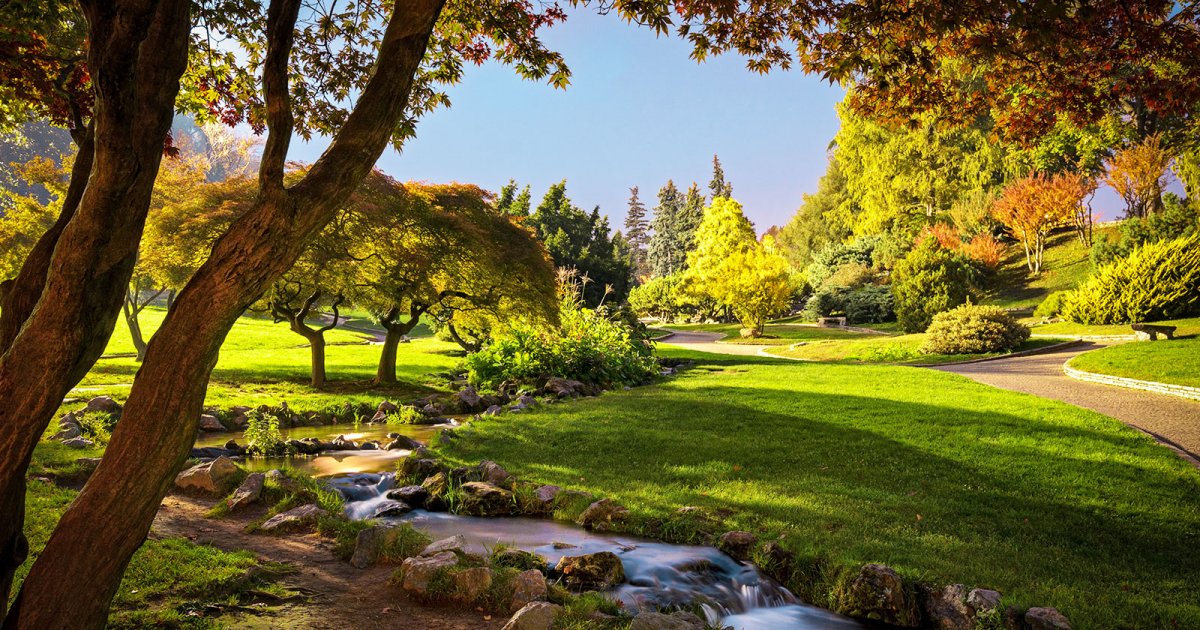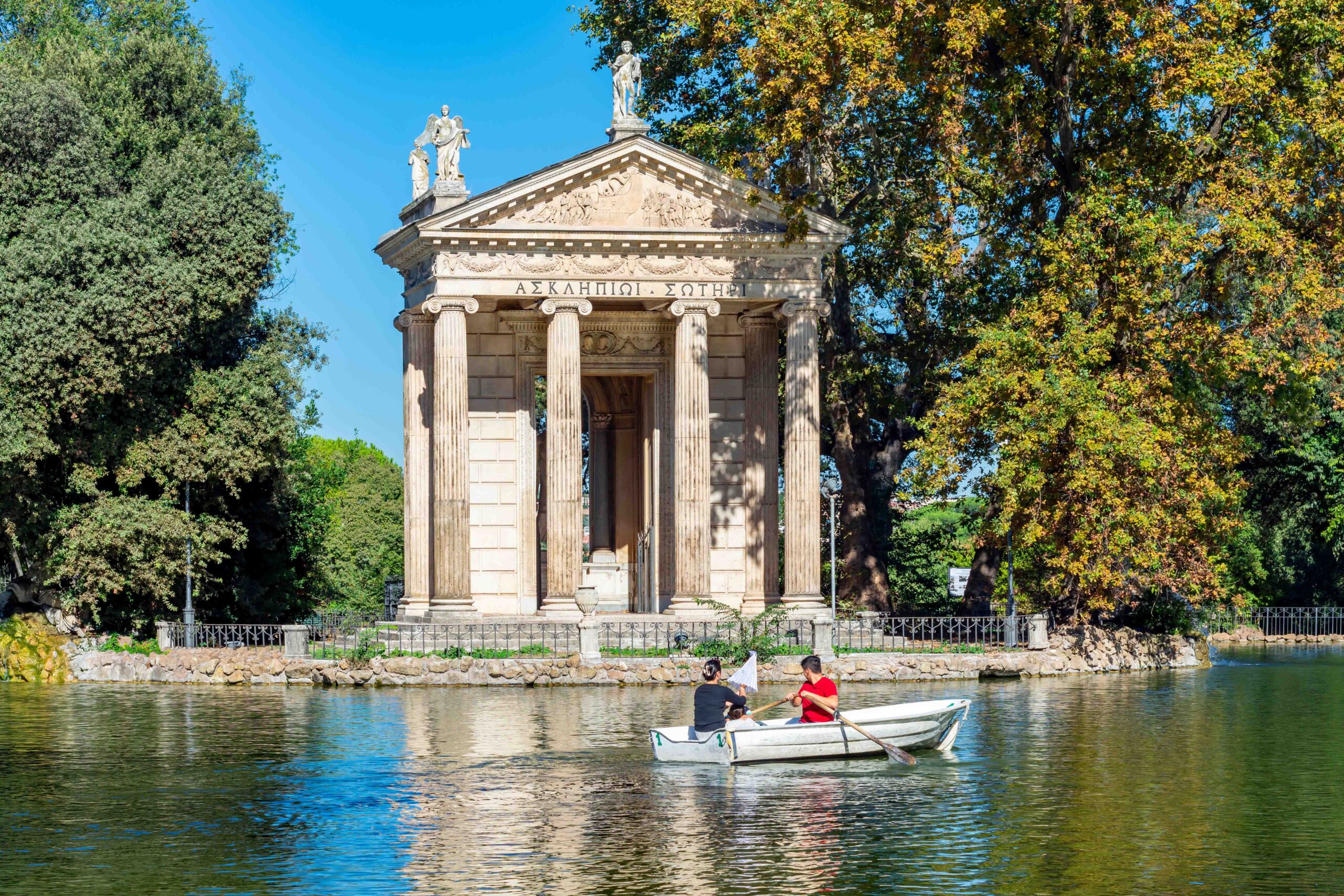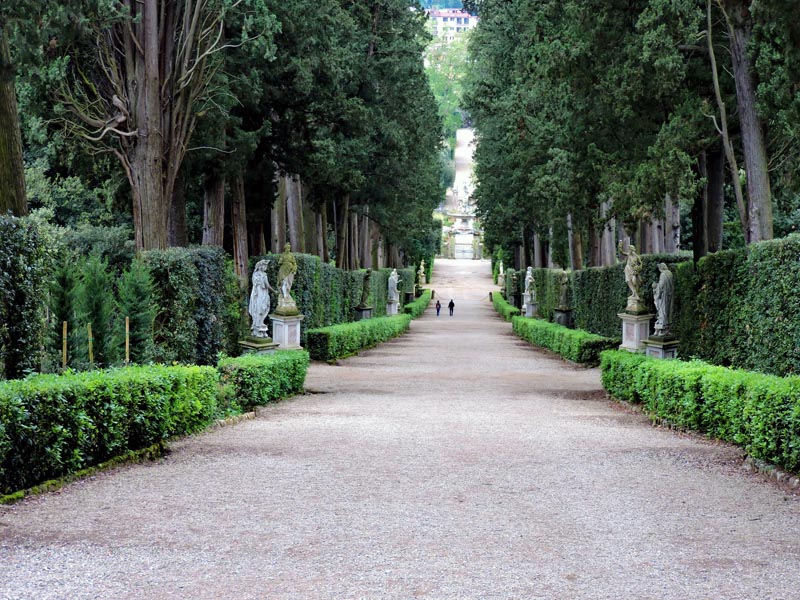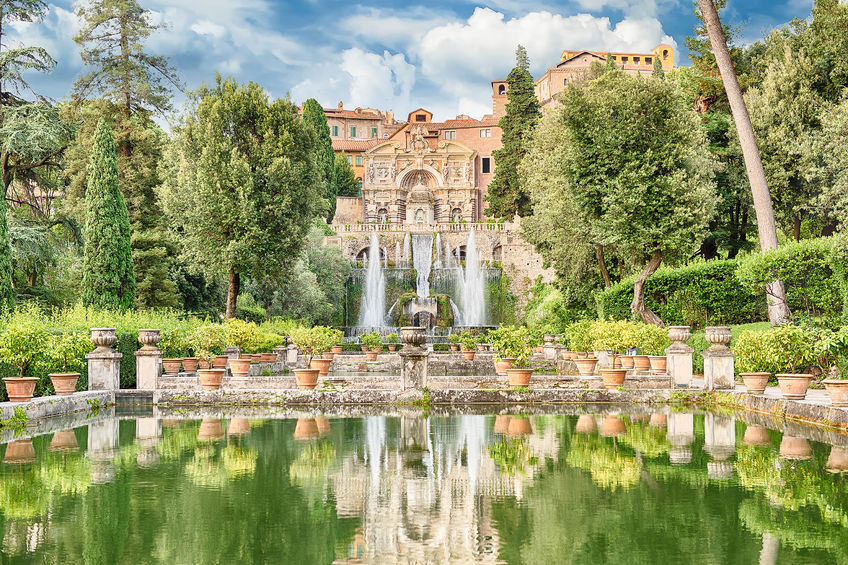Italy, renowned for its rich history, captivating art, and delectable cuisine, is also home to some of the most enchanting gardens in the world. These urban oases, scattered across the country’s iconic cities, offer a tranquil escape from the bustling streets and a glimpse into Italy’s botanical beauty and horticultural prowess.
Whether you are a nature enthusiast, a history buff, or simply looking for a peaceful retreat, the gardens of Italy provide a unique and serene addition to any travel itinerary.
Exploring these verdant spaces allows visitors to immerse themselves in lush landscapes and architectural elegance, meticulously maintained and cherished for centuries. Join us as we uncover the top must-see gardens in Italy, each with its own distinctive charm and allure, ensuring that your Italian adventure is both memorable and inspiring.
The Gardens of Milan

Milan, the bustling metropolis known for its fashion and design, is also home to some of Italy’s most captivating gardens. Parco Sempione, located just behind the iconic Sforza Castle, is a sprawling 95-acre green space offering a perfect blend of nature and history.
Designed in the style of English gardens, it features winding paths, picturesque bridges, and a tranquil lake.
The park also houses several cultural attractions, including the Triennale di Milano, an art and design museum, and the Torre Branca, a panoramic tower offering stunning views of the city.
Another gem in Milan is the Giardini Pubblici Indro Montanelli. Established in the late 18th century, this historic garden was the first public park in Milan. Its beautifully landscaped grounds include centuries-old trees, ornate fountains, and the Civic Museum of Natural History, perfect for a leisurely day of exploration.
For a more modern take on urban green spaces, the Biblioteca degli Alberi (Library of Trees) is a must-visit. This contemporary park in the Porta Nuova district integrates innovative design with lush greenery, featuring thematic gardens, circular forests, and an impressive array of plant species.
Getting there: All these gardens are easily accessible via Milan’s efficient public transportation system. Parco Sempione can be reached by taking the metro to the Cairoli or Lanza stations, while the Giardini Pubblici Indro Montanelli is near the Palestro metro station. The Biblioteca degli Alberi is conveniently located near the Garibaldi and Isola metro stations.
Whether you’re taking a leisurely stroll, enjoying a picnic, or soaking in the cultural landmarks, Milan’s gardens offer a serene retreat amidst the urban hustle, showcasing the city’s commitment to preserving its natural beauty alongside its vibrant urban life.
Reaching the city of Milan is very easy as it is well-connected with the rest of Italy. For international travelers arriving in Rome, it is possible to travel by train from capital to Milan with Italo.
The Gardens of Turin

Turin, the elegant capital of the Piedmont region, is famed for its regal architecture and refined charm. Amidst its grand boulevards and historic palaces, the city’s gardens offer serene escapes that reflect both its royal heritage and its commitment to green urban spaces.
Parco del Valentino is Turin’s most beloved and expansive park, stretching along the Po River. Established in 1856, it features an eclectic mix of manicured lawns, vibrant flower beds, and shaded walkways.
The park is home to the Borgo Medievale, a fascinating reproduction of a medieval village, complete with a castle, artisan workshops, and charming streets that transport visitors back in time.
Parco del Valentino also hosts several cultural and botanical attractions, including the Orto Botanico di Torino (Botanical Garden of Turin), which dates back to 1729 and showcases a diverse collection of plants from around the world.
Another notable green space in Turin is the Giardini Reali (Royal Gardens), which form part of the Royal Palace complex. Renowned architect André Le Nôtre, who also designed the gardens of Versailles, meticulously designed these gardens in the 16th century.
The Giardini Reali offer visitors a tranquil retreat with their formal layouts, elegant statues, and stunning views of the palace. The gardens are divided into upper and lower sections, with the lower garden providing a scenic promenade along the ancient city walls.
Getting there: Both Parco del Valentino and the Giardini Reali are conveniently located within Turin’s city center and are easily accessible by public transport.
Parco del Valentino can be reached via the Porta Nuova metro station, followed by a short walk or tram ride. The Giardini Reali are situated near the Turin Cathedral and can be accessed from the Porta Palazzo or Re Umberto metro stations.
These gardens not only offer a peaceful escape from the city’s hustle but also serve as a testament to Turin’s rich history and cultural dedication to preserving its natural landscapes. Exploring these verdant spaces provides a unique opportunity to experience the harmonious blend of nature, history, and urban sophistication that Turin has to offer.
The Gardens of Venice

Venice, renowned for its labyrinthine canals and timeless beauty, also boasts a selection of enchanting gardens that offer a refreshing contrast to its aquatic landscapes. These hidden gems provide peaceful retreats amidst the city’s architectural splendour and bustling tourist attractions.
Giardini della Biennale is one of the most significant green spaces in Venice. Established in 1895 to host the International Art Exhibition, this park is located in the Castello district and spans over 30 acres. The gardens are home to numerous national pavilions, each showcasing contemporary art from around the world during the Biennale events.
The park features a mix of landscapes, with tree-lined avenues, open lawns, and art installations seamlessly integrated into the natural surroundings. It’s a perfect place for art enthusiasts and nature lovers alike.
Another must-visit garden in Venice is the Giardini Reali (Royal Gardens), situated near Piazza San Marco. These gardens were commissioned by Napoleon in the early 19th century as part of his vision to modernize Venice.
Recently restored, the Giardini Reali offer meticulously maintained lawns, elegant flower beds, and shaded pergolas, providing a serene escape from the nearby tourist hotspots. The gardens also feature stunning views of the Grand Canal and the iconic Basilica di San Marco, making it an ideal spot for relaxation and reflection.
For a more intimate experience, the Garden of Palazzo Venier dei Leoni (now the Peggy Guggenheim Collection) is a hidden oasis in the heart of Venice’s Dorsoduro district. This tranquil garden, adorned with modern sculptures and lush vegetation, was once the private retreat of the American art collector Peggy Guggenheim. Today, it serves as a serene setting for one of the most important modern art museums in Italy.
Getting there: The Giardini della Biennale can be reached by taking the waterbus to the Giardini stop, located on lines 1, 4.1, 4.2, and 5.1. The Giardini Reali are a short walk from the San Marco Vallaresso vaporetto stop on lines 1 and 2. The Garden of Palazzo Venier dei Leoni is accessible from the Accademia or Salute vaporetto stops on lines 1 and 2.
Exploring these gardens provides a unique opportunity to experience a different side of Venice, one where art, history, and nature harmoniously coexist. These green sanctuaries are perfect for a leisurely stroll, a moment of contemplation, or simply enjoying the lush beauty that contrasts so vividly with Venice’s iconic waterways.
The Gardens of Rome

Rome, the Eternal City, is not only a treasure trove of ancient ruins and historic landmarks but home to some of Italy’s most breathtaking gardens. These verdant spaces offer a tranquil escape from the city’s vibrant energy and provide a glimpse into the opulent lifestyles of Rome’s past.
Villa Borghese is one of Rome’s most famous and expansive parks, covering over 80 hectares. The Borghese family originally designed this historic garden in the 17th century as a private vineyard, and it was later transformed into a public park.
Villa Borghese is renowned for its beautifully landscaped grounds, dotted with statues, fountains, and shaded pathways. The park is also home to several cultural institutions, including the Galleria Borghese, which houses an impressive collection of Renaissance and Baroque art, and the Bioparco di Roma, a zoological garden.
Another must-see garden is the Giardino degli Aranci (Orange Garden), located on the Aventine Hill. This small but picturesque garden offers stunning panoramic views of Rome, including a perfect view of St. Peter’s Basilica. Established in the 1930s, the garden is famous for its fragrant orange trees and its peaceful atmosphere, making it a favourite spot for both locals and tourists seeking a quiet retreat.
The Villa Doria Pamphili, Rome’s largest landscaped public park, spans 184 hectares. This magnificent garden was once the private estate of the Pamphili family and is now a public park featuring extensive woodlands, manicured lawns, and elegant fountains.
The centrepiece of the park is the 17th-century Villa Doria Pamphili, surrounded by formal gardens and ornamental lakes, offering visitors a glimpse into the grandeur of Rome’s aristocratic past.
Getting there: Villa Borghese can be easily accessed from the Spagna or Flaminio metro stations, followed by a short walk. The Giardino degli Aranci is a pleasant walk from the Circo Massimo metro station. Villa Doria Pamphili is reachable by taking a bus from the city centre to the Gianicolense/Ponte Sisto stop.
Exploring these gardens allows visitors to experience the lush beauty and historical depth that define Rome. Whether you are strolling through the expansive Villa Borghese, taking in the views from the Giardino degli Aranci, or exploring the vast grounds of Villa Doria Pamphili, Rome’s gardens provide a perfect blend of nature, history, and culture, enhancing any visit to this timeless city.
The Gardens of Florence

Florence, the cradle of the Renaissance, is renowned for its art, architecture, and cultural heritage. Amidst its historic splendour, the city also boasts some of the most exquisite gardens in Italy, offering serene retreats filled with botanical beauty and artistic charm.
Boboli Gardens is perhaps the most famous garden in Florence. Located behind the Pitti Palace, this expansive 16th-century garden is a masterpiece of Italian Renaissance landscaping. Originally designed for the Medici family, the Boboli Gardens feature an array of terraces, fountains, and statues, along with meticulously manicured lawns and groves.
Highlights include the Fountain of Neptune, the Isolotto (a small island garden), and the Buontalenti Grotto, an elaborately decorated cave-like structure. The garden also offers stunning panoramic views of Florence and the surrounding Tuscan countryside.
Another must-see garden is the Bardini Garden, a historic hillside garden that provides a tranquil escape with its lush vegetation and elegant design. Restored and reopened to the public in 2005, the Bardini Garden features winding paths, baroque staircases, and a stunning wisteria pergola that blooms spectacularly in spring. The garden’s elevated position offers breathtaking views over the city, making it a perfect spot for both relaxation and photography.
For a more intimate experience, the Giardino delle Rose (Rose Garden) is a delightful haven located just below Piazzale Michelangelo. Established in 1865, this charming garden is home to over 350 varieties of roses, as well as a collection of sculptures by the Belgian artist Jean-Michel Folon. The garden’s terraced layout and strategically placed benches make it an ideal location to enjoy the fragrant blooms while taking in the sweeping views of Florence’s iconic skyline.
Getting there: Boboli Gardens can be accessed through the Pitti Palace entrance, reachable by a short walk from the Ponte Vecchio. The Bardini Garden is also a short walk from the Pitti Palace or the Ponte alle Grazie. The Giardino delle Rose can be reached by walking from the San Niccolò district up to Piazzale Michelangelo, which is well-connected by local buses.
Exploring these gardens allows visitors to step back in time and experience the serene beauty that has inspired artists and poets for centuries. Whether wandering through the grand Boboli Gardens, enjoying the picturesque Bardini Garden, or savouring the floral delights of the Rose Garden, Florence’s gardens provide an enchanting addition to any visit to this historic city.
Conclusion

Exploring the gardens of Italy offers a unique opportunity to immerse yourself in the natural and cultural splendour of this remarkable country. From the expansive Boboli Gardens in Florence to the tranquil Giardino degli Aranci in Rome, each garden tells its own story of history, art, and botanical beauty.
As you plan your visits, remember the importance of respectful and sustainable tourism. By preserving these green spaces and appreciating their historical significance, we ensure that future generations can enjoy the same serene beauty. So take your time, breathe in the fragrant air, and let the gardens of Italy captivate your senses and enrich your travel experience.







